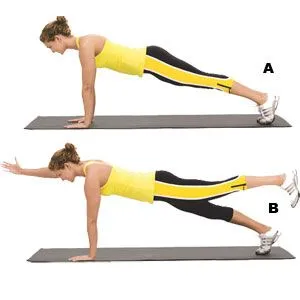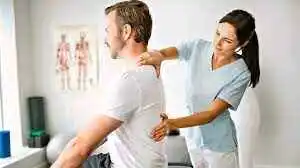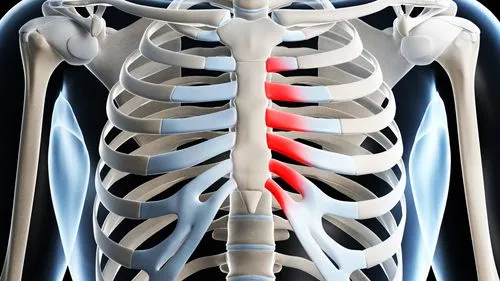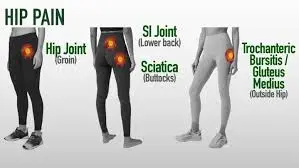Back Muscle Tightness
Introduction
Back muscle tightness is a common issue that many people experience due to factors like poor posture, overuse, stress, or underlying medical conditions. It often manifests as stiffness or discomfort in the upper, middle, or lower back, affecting mobility and daily activities.
The lower back, upper back, or muscles around the spine may be affected, and it may present as a dull pain, stiffness, or severe pain.
Anatomy of Back Muscle
- Extrinsic Muscle
- Intrinsic Muscle
Extrinsic Muscle includes:
- Trapezius
- Latissimus Dorsi
- Rhomboid Major and Minor
- Levator Scapulae
Trapezius:
- The trapezius muscle crosses the shoulders and reaches the mid-back.
- The upper portion raises the shoulder.
- The scapula retracts in the middle.
- The scapula is depressed at the lower half.
Latissimus Dorsi:
- Place: From the lower ribs to the upper arm, the latissimus dorsi muscles encompass the lower and middle back.
- Its functions include internal rotation, adduction (pulling the arm toward the body), and shoulder extension.
Rhomboid Major and Minor:
- Location: The shoulder blades and the spine are separated by these muscles.
- They support the stabilization of the shoulder girdle and aid in the retraction of the scapula, which pulls the shoulder blades together.
Levator Scapulae:
- Location: This muscle connects the top corner of the scapula to the upper cervical spine or neck.
- Function: Supports neck motions and raises the scapula.
Intrinsic Muscle includes
- Erector Spinae
- Transversospinalis
- Quadratus Lumborum
Erector Spinae:
- Location: A group of muscles that run vertically down the spine from the sacrum to the head is called the erector spinae.
- Stabilizing and lengthening the spine are the roles of the erector spinae. Moreover, it facilitates rotation and lateral flexion, or sideways bending.
- Three columns make up the erector spinae:
- The outermost column that aids in the extension and lateral bending of the spine is called the iliocostalis.
- The middle column that aids in the extension and rotation of the spine is called the longissimus.
- Spinalis: The innermost column that helps with extension and stabilizes the spine.
Transversospinalis:
- Location: Between the spinous processes (the bony protrusions along the spine) and the transverse processes (the little projections from each vertebra), these deep muscles are situated.
- Multifidus: Located all the way along the vertebral column, these structures are essential for keeping the spine stable when moving.
- The little muscles known as the rotatores help extend and rotate the spine.
Quadratus Lumborum:
- Location: In the lower back, it joins the lumbar vertebrae, lower ribs, and iliac crest (hip bone).
- The quadratus lumborum’s function is to support the spine and pelvis. Keeping the rib cage stable facilitates respiration and helps the spine bend laterally.
Causes
- Poor Posture
- Muscle Strain
- Overuse
- Stress and Tension
- Dehydration
- Inactivity
- Injury or Trauma
- Underactive Core Muscles
Poor Posture: Long-term poor posture when sitting or standing can cause muscular tension, particularly in the shoulders and lower back.
Muscle Strain: Muscle strains may result from improper lifting techniques, abrupt motions, or repeated tasks.
Overuse: Tight muscles might come from severe exercise or physical activity that is not properly recovered from.
Stress and Tension: Especially in the neck, shoulders, and upper back, emotional stress can make muscles tense.
Dehydration: Muscle tightness and cramping might result from consuming insufficient amounts of water.
Inactivity: Muscles can get stiff by sitting or lying down for extended periods of time without moving.
Injury or Trauma: Muscle spasms and back stiffness might result from a fall or other abrupt impact.
Underactive Core Muscles: The back muscles may be overworked if the core muscles are weak.
Symptoms
- Muscle Stiffness
- Dull Ache or Soreness
- Localized Pain
- Muscle Spasms
- Reduced Range of Motion
- Tightness
- Pain Radiating to Other Areas
- Numbness or Tingling
- Headaches
- Fatigue
- Pain that Worsens with Certain Movements
- Worsening Pain with Stress
When to Seek Medical Attention
Despite the fact that muscular soreness usually passes with rest and self-care, you should see a doctor if:
- It hurts a lot, sharply, or continuously.
- Without getting better, the stiffness persists for more than a few days.
- You feel weak, tingly, or numb in your arms, legs, or other parts of your body.
- Fever and inexplicable weight loss accompany the tightness, which might be signs of an infection or other medical disease.
- You may have a major spinal problem (such as cauda equina syndrome) if you have trouble managing your bowel or bladder function.
Diagnosis
- Medical History
- Physical Examination
- Imaging and Diagnostic Tests
Imaging and Diagnosis:
X-rays: Bone alignment, structure, and indications of spinal abnormalities or degenerative disc disease are frequently evaluated via X-rays.
However, soft structures like muscles and ligaments are invisible on X-rays.
MRI: Muscles, ligaments, and intervertebral discs are among the soft tissues that may be seen in great detail on MRI scans. This can assist in determining whether a person has spinal stenosis, herniated discs, or other problems that impact the muscles or spine.
CT Scan: If more precise pictures of the soft tissues and bones are required—especially if MRI is not appropriate or available—a CT scan can be suggested.
Electromyography (EMG): In order to evaluate nerve impingement or other neurological problems, an EMG can assess the electrical activity in the muscles and nerves if nerve compression is suspected (for example, from a herniated disc).
Treatment
Stretching, strengthening exercises, self-care practices, and perhaps expert therapies are routinely used to treat back muscular stiffness, depending on its degree and underlying reason.
- Stretching
- Heat Therapy
- Cold Therapy
- Over-the-Counter Pain Relief
- Posture Correction
- Strengthening Exercises
- Physical Therapy
- Medical Intervention
Over-the-counter Pain Relief: Pain and inflammation can be reduced by NSAIDs (such as ibuprofen) or acetaminophen, but only when used as prescribed.
Medical Intervention: In cases when muscular stiffness is severe, chronic, or linked to an injury, a medical professional may recommend further therapies such as prescription muscle relaxants or painkillers.
Osteopathic manipulation or chiropractic adjustments for problems with alignment.
For specific pain relief and muscular relaxation, use acupuncture.
Heat Therapy: Blood circulation can be enhanced, and muscles can be relaxed by using a warm bath, heating pad, or compress.
Cold Therapy: Applying ice packs for 15 to 20 minutes to the afflicted area can help dull severe pain and decrease inflammation.
Physical Therapy Treatment
A tailored program to enhance posture, strength, and flexibility can be created by a physical therapist, particularly if you suffer from severe or persistent muscular tightness.
- Stretching
- Strengthening Exercises
- Posture Correction
Stretching
- Cat-Cow Stretch
- Child’s Pose
- Seated Forward Bend
- Torso Twists
- Knee- to- Chest Stretch
- Figure Four Stretch
Cat-Cow Stretch
- Begin by undertaking a tabletop stance on your control and knees.
- As you upraise your chest and tailbone toward the ceiling by arching your back( Cow pose), take a breath.
- Exhale by bending your back (cat stance) and tucking your chin and tailbone toward the bed.
- Continue for ten to fifteen cycles, moving deliberately and slowly.

Child’s Pose
- Sit back on your heels and stretch your arms forward from a hands-and-knees position.
- While extending your hips and back, lower your forehead to the ground.
- Return to the beginning position after holding for 20 to 30 seconds while taking deep breaths.

Seated Forward Bend
- Your legs should be directly outside in front of you while you sit on the bottom.
- Breathe in and extend your back.
- After exhaling, slowly fold onward and snap your shins or bases.
- Hold for twenty to thirty seconds while maintaining the straightest possible back.

Spinal Twist
- Your legs should be directly outside in front of you while you sit on the bottom.
- Your bottom should be on the outside of your left foreleg while your right knee is crooked.
- Your core should be gently bent to the right by laying your left elbow on the exterior of your right knee.

Knee- to- Chest Stretch
- Your bases should be positioned on the bottom, and your knees should be crooked while you lie on your reverse.
- With your control clasped behind the foreleg, bring one knee up to your chest.
- After gripping for 20 to 30 seconds, change legs.

Figure Four Stretch
- Observe your knees bent while lying on your reverse.
- Apply your legs to form a figure-four, and put your right ankle on your left knee.
- To make the stretch deeper, gently drag your left foreleg toward your chest.

Cobra Stretch
- position your palms flat on the bottom beneath your shoulders and stretch your legs while you lie face down on the bottom.
- Arch your rear by sluggishly pressing into your palms to raise your chest off the ground.

Strengthing
- Plank
- Superman Exercise
- Bird- Dog
- Glute Bridge
- Dead Bug
- Wall Sits
- Back Extension
Plank
- Start a drive-up by keeping your shoulders above your wrists and your arms straight.
- observe your core in a straightaway line from your head to your heels by using your core.
- Start with 20 – 30 seconds of holding, then increase to 1 minute as you go.

Superman Exercise
- Extend your arms above while lying face down on the bottom.
- At the same time, raise your legs, arms, and torso as high as you can.
- Do this 10 – 15 times.

Bird- Dog
- To create a tabletop position, start on your hands and knees, positioning your hands just behind your shoulders and your knees behind your hips.
- keeping up a straightforward body alignment, extend your right arm forward and your left leg straightway back.
- Return to the starting pose after gripping for a short time.
- do to the contrary side.

Glute Bridge
- With your knees crooked and your bases flat on the bottom, hip-range apart, lie on your reverse.
- Contract your glutes and core as you elevate your hips toward the ceiling to create a straight line from your shoulders to your knees.
- At the peak, hold for numerous seconds before lowering yourself gradually again.
- Do this 10 – 15 times.

Dead Bug
- With your arms reaching toward the ceiling and your legs bent at a 90-degree angle, lie on your back.
- With your rear flat on the bottom, slowly drop your left leg and right arm toward the bottom.
- Go back to the beginning and do it again on the contrary side.
- Do 10 to 12 reps

Wall Sits
- Your bases should be hip-range apart as you stand with your rear to a wall.
- Gently descend the wall until your knees form a 90-degree angle.
- As your strength increases, precipitately increase the duration of the posture from 20 to 30 seconds.

Cobra Pose- Back Extension
- With your hands crossed over your chest or behind your head, lie face down on an exercise ball or mat.
- Lower back muscles should be contracted to raise your chest off the bottom( or ball).
- Hold for one or two seconds, and gently lower yourself again.
- Do this 10 – 15 times.

Posture Correction: Pressure in the reverse muscles can be aggravated by bad posture. Aim for an ergonomic workstation and practice sitting and standing with the right alignment.

Prevention
- Maintain Good Posture
- Strengthen Core and Back Muscles
- Stretch Regularly
- Exercise Proper Lifting ways
- Stay Active
- Manage Your Weight
- Sleep with Proper Alignment
- Avoid Stress
- Ergonomic Work Environment
- Stay Doused and Eat Nutritious Foods
- Avoid Overexertion
- Avoid Smoking
Summary
Back muscular tightness is a frequent problem that may be successfully treated with a mix of focused therapies, regular exercise, and healthy behaviors. Back stiffness may be avoided and a healthier, more flexible back can be encouraged by correcting posture, maintaining an active lifestyle, and correcting muscular imbalances. It is crucial to see a healthcare provider to rule out underlying illnesses if the tightness continues or is accompanied by excruciating pain.
FAQ’s
What causes back muscle tightness?
Poor posture
Muscle overuse or strain
Sedentary lifestyle
Stress
Injury or trauma
Muscle imbalances
How can I relieve back muscle tightness?
Stretching
Heat or cold therapy
Massage
Over-the-counter pain relievers
Strengthening exercises
Proper posture
What are some effective stretches for back tightness?
Cat-Cow Stretch
Child’s Pose
Seated Forward Bend
Spinal Twists
Knee-to-Chest Stretch
Hip Flexor Stretches
What exercises strengthen the back to prevent tightness?
Planks
Glute Bridges
Bird-Dog
Superman Exercise
Dead Bug
Reverse Hyperextensions
Can sleeping position affect back tightness?
Actually, sleeping in a discomforting posture can aggravate back pain. Your muscles may be strained if you sleep on your stomach or in a posture that throws off your spine alignment. To maintain the natural curve of the spine, it is ideal to sleep on your back with a cushion behind your knees or on your side with a pillow between your knees.







